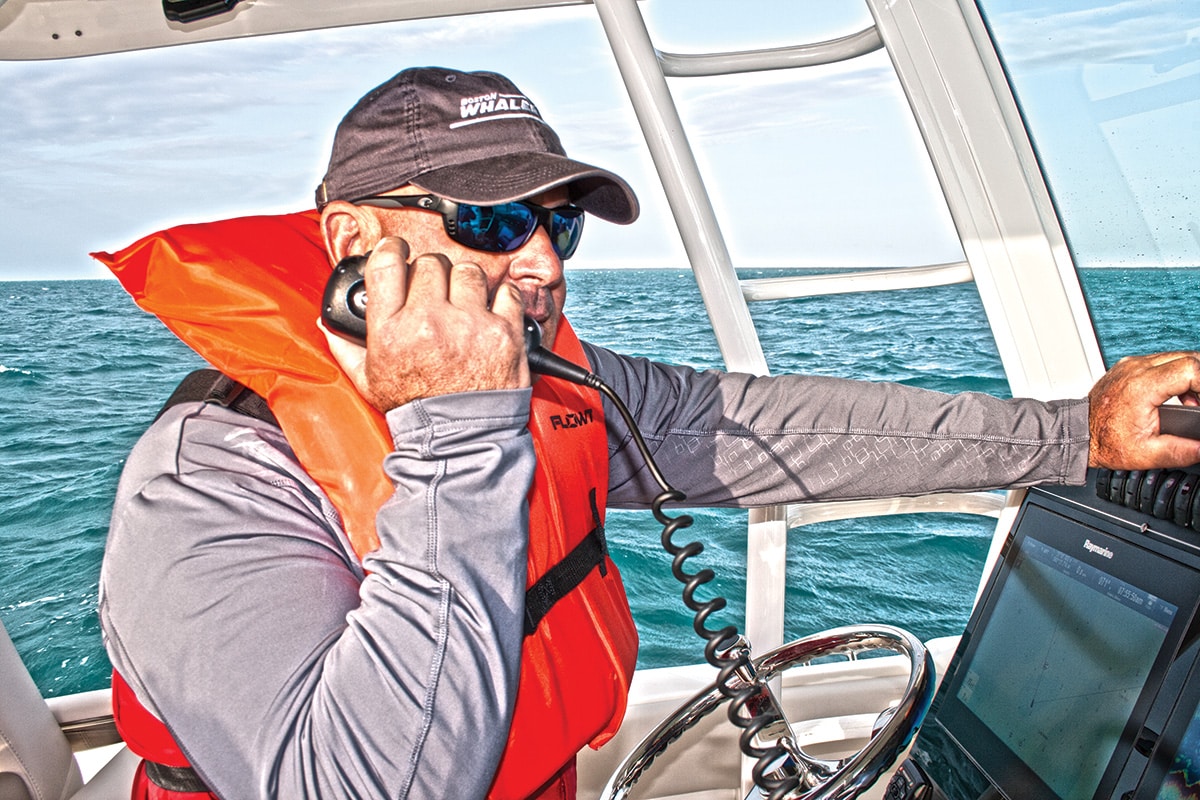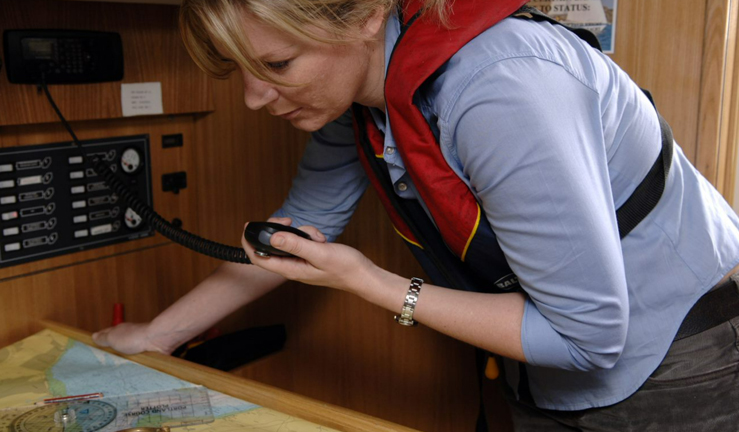Marine Distress Calls Explained
Do you know the difference between pan-pan vs. mayday, what a sécurité call is, and how marine distress calls work in general? A VHF radio is the best, most reliable way to call for help when aboard a boat, and understanding the different distress calls is imperative.
Read on to gain a full understanding of just what you need to say to get your message across to the Coast Guard and other search and rescue authorities when loss of life or property is in danger at sea. The top three items on this agenda include:
- The difference between mayday, pan-pan and sécurité
- How to make a distress call with and without DSC capability
- What to do if you hear a distress call
What Is The Difference Between Mayday, Pan-Pan And Sécurité?
Each of these terms has a specific meaning, and beginning with it instantly communicates the nature of your emergency when you make a marine distress call.
Mayday
A mayday call is reserved for situations requiring the most urgent attention. It should be used only when a person’s well-being is in immediate danger, such as if your boat is rapidly sinking or someone aboard has a life-threatening medical emergency.
Pan-Pan
This term indicates a situation that isn’t immediately life-threatening but could become worse at any moment, such as if you’ve lost power and are safe for the moment but drifting toward a busy shipping lane.
Sécurité
A sécurité (pronounced “securitay”) is a general call including information regarding safety. It is generally issued only by the authorities, licensed ship captains, or captains engaged in commercial activities. You might hear a sécurité call when a large ship constrained by its draft enters a narrow, crowded channel, or the Coast Guard announces a hazard to navigation.
How To Make A Distress Call
Distress calls should include certain critical information broadcast in a specific way to ensure that the authorities and other boaters clearly know the nature of the emergency. The specific elements include:
- Make sure your VHF radio is tuned to channel 16.
- Make sure the radio is set to full power (25 watts for fixed-mount units).
- Make sure the antenna is in a fully upright position.
- Key the microphone and begin by repeating the appropriate distress term three times slowly and clearly. (“Pan-Pan, Pan-Pan, Pan-Pan” or “Mayday, Mayday, Mayday.”)
- Say “This is (name of boat three times).”
- If making a mayday call, repeat once more “Mayday” and your boat’s name.
- State your position, including GPS coordinates if possible.
- Briefly describe your emergency or urgent situation.
- State the kind of assistance needed.
- Report the number of people on board, their ages if children or elderly, and any injuries.
- Describe your vessel and its seaworthiness.
- Release the microphone key and listen for a response.
- If there is no response after 10 to 15 seconds, repeat the broadcast.
Captains should commit the emergency call protocol to memory. It’s also a good idea to keep a laminated script close to your VHF radio to make sure you get it right if you ever need to make a distress call under the stress of a real boating emergency.
Configuring Your Radio For Making A Distress Call
VHF radios have several safety features that go beyond merely allowing you to communicate with the authorities and other boats. The most important is digital selective calling (DSC), which immediately transmits your GPS coordinates and critical information about the boat you’re on to the Coast Guard. DSC capability is in every fixed-mount VHF radio produced today. However, your VHF must be properly configured for it to function.
DSC Calling
To use DSC, a VHF must have GPS data and be programmed with a Maritime Mobile Service Identity (MMSI) number. Many modern VHFs have GPS built in, but if yours doesn’t, it will need to be connected to a chart plotter or VHF. This simply means linking a couple of GPS output and VHF input wires; check your owner’s manual to see how it’s done with your specific unit. Then you can register for an MMSI number.
Finally, follow the instructions in your VHF owner’s manual to program in the nine-digit number. Once your unit is programmed, all you have to do to make a DSC distress call is raise the button guard on the VHF and press the red distress button.
Another Distress-Call VHF Feature
On boats with automatic identification system (AIS) functionality, you can also make AIS distress calls when the VHF is integrated with the system. These include position information and are highlighted on the chart plotters of AIS-equipped vessels.
In the case of handheld VHF radios, integrated strobe lights can also assist in signaling for help.
What Should A Boater Do If They Hear A Distress Call?
If you hear a distress call from another boat, you should respond immediately. In fact, maritime law says the master of any vessel subject to U.S. jurisdiction is required to render assistance as long as it can be done without endangering yourself or other people. This includes going to the boat in danger to lend a hand or communicating with them and relaying communications to and from the authorities, if necessary.
However, if the boat making the distress call is communicating directly with search and rescue personnel, it’s best not to interfere with those communications.
Closing Remarks and FAQ
Recreational boating has become amazingly safe through the years. However, the potential risk to life and property exists any time a boat is on the water.
Being prepared to make marine distress calls, understanding terms like mayday, pan-pan and sécurité, and performing regular VHF radio checks to ensure proper functionality are critical to safe boating.
1. When should a boater make a distress call?
When an emergency situation threatens the well-being of people or property.
2. What is the difference between mayday, pan-pan and sécurité?
Mayday is used for urgent situations only. Pan-pan is used in dangerous situations that could become urgent. Sécurité is used by authorities to advise others of general situational information.
3. How should a VHF be configured ahead of time to make distress calls?
It should be equipped and registered for DSC and, if your boat has AIS, integrated with the system.
4. What VHF features are important for making a distress call?
DSC is the most important feature. Note that antenna height and position will have an impact on the range at which you can make a distress call.
5. What should a boater do if they receive a distress call?
Respond ASAP and be prepared to lend assistance or relay communications with the authorities.
6. What should a boater do if they accidentally make a distress call?
Communicate the mistake immediately. Specific instructions for canceling DSC distress calls include switching the unit off and on, setting to channel 16, broadcasting the boat name and MMSI number, and stating you are canceling a false distress call.


